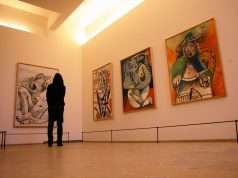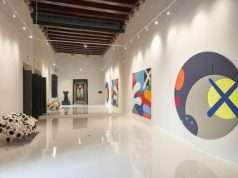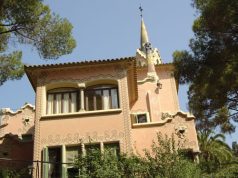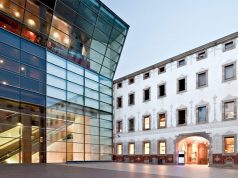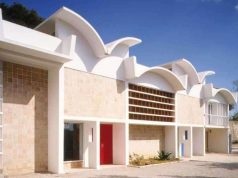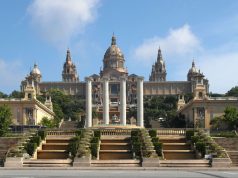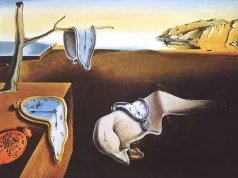Barcelona’s Roman ruins are still very visible within the city. In this article, we explore the Roman history of Barcelona, and where to see the Roman remains.
As many tourists enjoy a walk around the Gothic Quarter of Barcelona, they may not realise the history of 2000 years ago. As you explore the Gothic Quarter you are walking along streets that where once the Roman city of Barcino. Like many Roman cities at the time, Barcino included some great and grand Roman structures. Fortunately, some of Barcelona’s Roman ruins are visable around the city.
As the 19th century approached, the priority was demolishing these remaining structures and creating new ones to make Barcelona a modern city. Fortunately, people started to understand the importance of preserving the Roman remains of Barcelona. Although unfortunately, no Roman Remains were saved in their original condition, the Barcelona Roman remains give us a glimpse in to Barcelona’s Roman city of Barcino.

It is important to remember that Barcelona was once a thriving Roman city called Barcino with origins dating from the 1st century B.C.. Fortunately, the Roman ruins of Barcelona still exist around the city and should be visited when exploring the Gothic Quarter. Many of these Roman remains you may even pass by without truly understanding their historic importance. We highlight some of the best of Barcelona’s Romain remains that you will easily find as you explore the city.
MUHBA Museum Plaça del Rei
Undoubtedly, one of the best ways to explore the Roman ruins of Barcelona is to visit the MUHBA Museum. This is a unique chance to walk through the original streets of Barcino, and even enter what were actual buildings. The MUHBA Plaça del Rei has done an incredible job in preserving the most important remains of Barcelona’s Roman city.
The museum complex features 4000 m2 of area to explore the history of the Roman City of Barcino. The site will take you through from the Roman times up to the city’s Medieval years. Most of the complex is situated under Plaça del Rei, other nearby historic sights also form part of the visit.
If you are interested in learning more about the Roman city of Barcino, try the MUHBA Plaça del Rei. We feel that the MUHBA museum is really the best place to start. The most interesting fact is that the museum actually contains preserved elements of the actual Roman city of Barcino. This is why we think this museum makes our top pick to learn about the Roman history of Barcelona.
Roman Walls Of Barcelona
Once, the great Roman of Barcelona had a total length of 1.3 kilometers. Nowadays, some fragments of this historic wall and towers remain as ruins. The very first Roman wall was constructed in the 1st century B.C. And was later reinforced with a second wall. The reinforced second wall dates from the 4th century A.D. and parts of the remaining wall can still be viewed today.
If you would like to view the remains of the Roman walls, you can visit Plaça Ramon Berenguer. It is within this square that parts of the 4th century reinforced walls and tower remain. Furthermore, you can view the ruins of the Roman wall and two towers at Plaça Nova. It was here that these remains were actually the main gateway to the Roman city of Barcino.

A regrettable fact is that during the 19th century, much of the original Roman walls were demolished. This was to make way for construction work and expand the city. Luckily, as noted above in this blog, fragments are now preserved for future generations to view.
MUHBA Roman Ruins Of The Temple d’August
The Temple of Augustus forms part of the MUHBA collection. The remains of the Temple of Augustus can be viewed at Carrer del Paradis 10, in the Gothic Quarter. Incredibly, the remains of the Temple were not discovered until the 19th century. It was during the excavation works for the Centre Excursionista de Catalyuna, that the remains of the temple were discovered and preserved.
The MUHBA Temple of August has the four original columns from the Roman temple on display within a courtyard. These four Roman columns, standing 9 meters high, are placed on top of the original plinth. As Barcelona progressed in to the medieval ages, the columns were hidden within the medieval buildings. In many ways, they were almost forgotten about, until the late 18th century when they were discovered.
The original Temple of Augustus was used as a religious building and formed part of the forum square of Barcino. The temple was constructed in the 1st century B.C. and is now around 2000 years old. These unique remains are of significant importance and are among some of the best remains of the Roman city of Barcino.
MUHBA Via Sepulcral Romana
An interesting site with an ancient Roman necropolis or Roman burial site, as it is known. It was during building work of the Plaça de la Vila de Madrid in the 1950s that the burial site was discovered. The burial site was the most important site in the Roman city of Barcino. Today, you can stop by and visit this preserved Roman site dating as far back as the 1st century A.D.
MUHBA The Domus Of Sant Honorat
The Domus of Sant Honorat is a preserved Roman house dating from the 4th century. The house constructed in the main center of Barcino signifies that it was occupied by a prominent family. The house can be visited at Carrer de la Fruta 2, in the Gothic Quarter district of Barcelona.
A Brief Timeline of the Roman City of Barcino
A brief history of the Roman City of Bárcino from its early history to its final demise.
- Barcino existed from the 1st century BC to the start of the Middle Ages.
- It began as a small colony and gradually grew to briefly become an imperial city.
- The Romans arrived between 15 and 13 BC, looking for the best place to found a colony between Emporiae (Empúries) and Tàrraco (Tarragona).
- They chose the top of Mount Taber, where Plaça de Sant Jaume is today.
- The colony was called Julia Augusta Faventia Paterna Barcino.
- A wall was built around it between the 1st and 2nd centuries, which was reinforced between the 3rd and 4th centuries.
- It kept the structure of a Roman city, with a forum at the center from which two streets spread out in the form of a cross, the cardus and the decumanus, leading to the four entrance gates.
- By the start of the 5th century, money was already being minted in the city, establishing the first link with the imperial elite and placing it among the powerful cities.
- The splendor of that period ended at the start of the modern era with the War of the Spanish Succession. Bárcino became Barcelona, as we know it today.
The history of the Roman city of Bárcino is fascinating. . Today, many Roman ruins remain hidden within the modern city of Barcelona. These Roman remains can be spotted as you explore the Gothic Quarter, that was once Bárcino. It makes for a great idea, when exploring the Gothic Quarter, to also pay attention to the Roman ruins of Barcelona.


